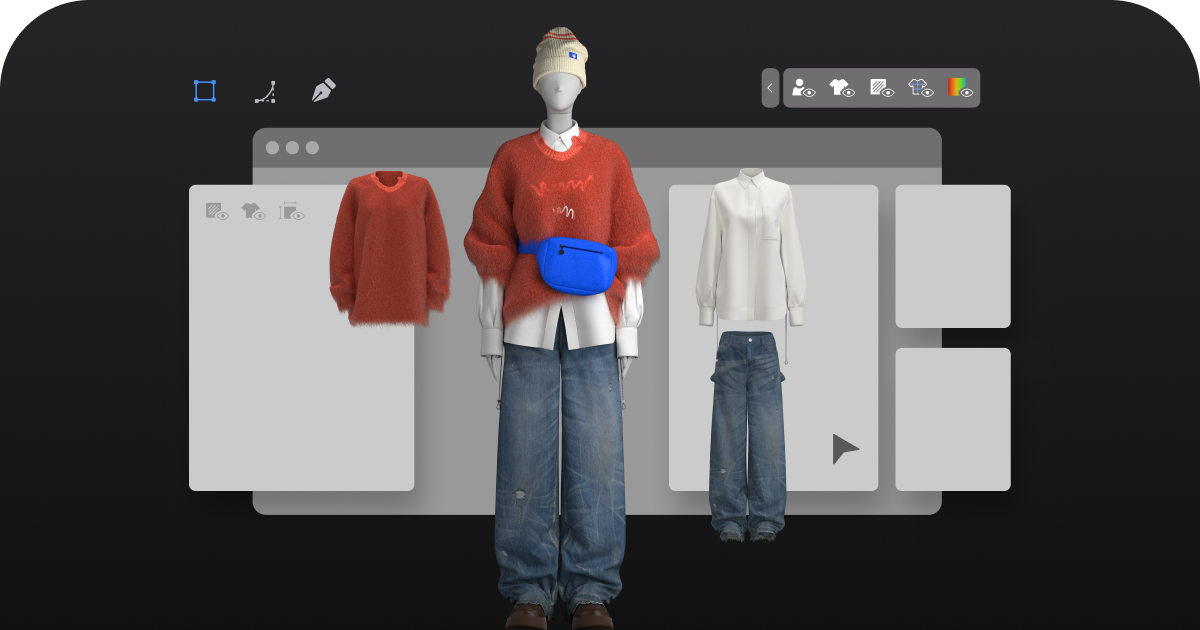
,文章长度在1000字左右
# Apparel Design Software for Fashion Professionals
## The Evolution of Fashion Design Tools
The fashion industry has undergone a digital revolution in recent years, with apparel design software becoming an indispensable tool for modern fashion professionals. Gone are the days when designers relied solely on pencil sketches and physical prototypes. Today’s competitive landscape demands efficiency, precision, and the ability to visualize designs in three dimensions before production begins.
## Key Features of Modern Apparel Design Software
### 1. Digital Pattern Making
Advanced apparel design software now offers sophisticated pattern-making capabilities that allow designers to create, modify, and test patterns digitally. This eliminates much of the trial-and-error process that traditionally occurred with physical samples, saving both time and material costs.
### 2. 3D Garment Simulation
One of the most significant advancements in apparel design software is the ability to simulate how fabrics will drape and move on virtual models. This technology enables designers to see how different materials will behave before committing to physical prototypes.
### 3. Color and Print Development
Modern software solutions provide comprehensive tools for developing color palettes and creating intricate prints. Designers can experiment with endless color combinations and pattern variations with just a few clicks.
## Benefits for Fashion Professionals
### Increased Efficiency
Apparel design software dramatically reduces the time required to bring a design from concept to production. What once took weeks can now be accomplished in days or even hours, allowing for faster turnaround times and more design iterations.
### Cost Reduction
By minimizing the need for physical samples and reducing material waste, design software helps fashion companies significantly cut costs. This is particularly valuable for small businesses and independent designers working with limited budgets.
### Enhanced Collaboration
Cloud-based apparel design platforms enable seamless collaboration between designers, pattern makers, and manufacturers across different locations. Team members can work on the same project simultaneously, with changes updated in real-time.
## Choosing the Right Apparel Design Software
When selecting apparel design software, fashion professionals should consider several factors:
– Industry-specific features tailored to fashion design
– Compatibility with existing systems and workflows
– Learning curve and available training resources
– Integration capabilities with other business tools
– Scalability to grow with your business
## Popular Apparel Design Software Options
### 1. Browzwear
Browzwear offers comprehensive 3D fashion design solutions with realistic fabric simulation and pattern-making tools. Its VStitcher and Lotta platforms are widely used in the industry.
### 2. CLO 3D
CLO 3D has gained popularity for its intuitive interface and powerful 3D visualization capabilities. It’s particularly favored by designers who want to see their creations come to life quickly.
### 3. Optitex
Optitex provides a complete solution for pattern making, grading, and marker making, with strong 3D capabilities for virtual prototyping.
Keyword: apparel design software
### 4. Adobe Illustrator with Fashion Plugins
While not specifically designed for fashion, Adobe Illustrator remains a popular choice when combined with specialized fashion plugins for technical drawings and flat sketches.
## The Future of Apparel Design Software
As technology continues to advance, we can expect apparel design software to incorporate more artificial intelligence features, enhanced virtual and augmented reality capabilities, and even more realistic fabric simulations. These developments will further streamline the design process and open up new creative possibilities for fashion professionals.
For today’s fashion designers, mastering apparel design software is no longer optional—it’s an essential skill that can make the difference between success and stagnation in an increasingly competitive industry. By leveraging these powerful tools, designers can focus more on creativity while the software handles the technical complexities of bringing their visions to life.